How to play...
Creating your perfect city is a lot more than just placing buildings randomly.... after all, real towns and cities are not created that way.
Happiness is the measure of a great city and keeping your city happiness high is your most important priority. High city happiness will increase residents, increase jobs and increase your income.
Each building has a happiness value and this is based upon the surrounding buildings, the area it is placed in and what level of city services it has. Experiment with different layouts to find the most optimal city design.
Residential
|

Residential buildings provide housing for the people living in your city.
Residential buildings are greatly affected by pollution and they should not be placed near commercial and industrial buildings.
Try and keep residential buildings together and surround them wih trees and parks for maximum happiness.
|
Commercial
|

Commercial buildings provide (medium density) jobs for your residents.
Commercial buildings are mildly affected by pollution but should still be kept separate from industrial buildings.
Commercial yields are lower than industrial but they will yield quicker. The higher the city happiness the greater the payout.
|
Industrial
|

Industrial buildings provide (high density) jobs for your residents.
Industrial buildings are not affected by pollution and should be placed with other industrial buildings.
Industrial yields are higher than commercial but they will yield slower. The higher the city happiness the greater the payout.
|
Community
|

Community buildings provide (low density) jobs for your residents and boost happiness for surrounding buildings.
Community buildings are only mildly affected by pollution and can be placed anywhere.
Community employment adds to your commercial employment.
|
Utilities
|

Utility buildings provide (low density) jobs for your residents. They provide water and power for your city with and also trash removal.
Utility buildings are not affected by pollution and should be placed with other industrial buildings.
Some power stations are polluting and should be separated from the rest of your city. Utility employment adds to your industrial employment.
|
Transport & Military
|

Transportation is key to keeping your city happy by taking the load of your road network.
This will not only reduce pollution but increase city happiness to.
Train stations need to connect to straight track.
Build a bus and Railway network to efficiently move residents around your city.
Build seaports to boost your commerce and airports to move people in and out of your thriving city.
Piers will need to open out onto open water to function.
Runways must have a least 3 straight runway pieces and the correct end pieces to function. When constructed correctly, the game highlights the direction that planes will land.
|
Special Buildings
|

Special buildings can only be purchased with diamonds as they are exclusive buildings to add to your city. They can be residential, commercial, industrial or decorations.
Because they are exclusive buildings they will have the greatest capacity for population or employment or happiness.
Arcologies are special self-contained communities housed within a single building. Arcologies can accomodate many thousands of residents.
They provide a balanced amount of residents and employment and can be either commercial or industrial.
|
Farming
|
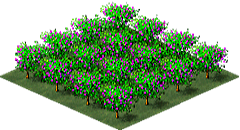
Farming buildings provide (low density) jobs for your residents and produce food for your city. Food is automatically collected when you are playing.
It can be traded for income or stored and exchanged for diamonds (you will need a diamond exchange).
Farming buildings increase happiness and provide ecology for your city. Farming employment adds to your industrial employment.
|
Trees & Decorations
|

Decorations provide a boost for both happiness and ecology.
Increase city happiness by liberally decorating your city with as many parks and trees as you can. Neutralise pollution by placing lots of trees.
|
Most buildings will reduce city happiness, add pollution and consume water and electricity. To counter this add community buildings, trees, decorations and utilities as your city grows.
Buildings are happiest when they have police, fire, education, health coverage. The higher the coverage the larger the happiness boost they will receive.
If a building houses 10 people or provides 10 jobs this is its standard amount. It can be more or less than this depending on the building's happiness. For example, really happy buildings can more than double their capacity.
Buildings can be upgraded to level 10. Upgrading buildings increases their residential capacity, employment or happiness (depending on the building type). Upgrading buildings will not only affect the building you are upgrading and it can also affect the surrounding buildings too.
Buildings that cost gold (or diamonds) to purchase will provide much more population or employment or happiness than buildings that cost cash. They also place much lower demands on city services than normal buildings. Gold and Diamond buildings are free to upgrade.
The best cities will apply zoning techniques to move pollution away from residential areas and commercial areas.
How do buildings affect each other?
All buildings have an "area of effect" and affect the buildings around them. Buildings with high pollution will negatively affect the surrounding buildings whereas decorations and community buildings will positively affect the surrounding buildings.
Upgrading city services increases their area of effect. The coverage area increases one tile in each direction for every two levels of upgrade. A level 10 building will cover 4x the area of a standard building.
Residential buildings will need police, fire, medical and education coverage.
Commercial, industrial and community buildings will need police, fire and medical coverage.
How do I know what my city needs?

The RCI bar will show you what the current demands are for your city. The longer the bar (to the right) the higher the demand is.
In this example, commercial (blue) has the highest demand, residential (green) has medium demand and industrial (yellow) has the least demand. Balancing the demand is important to building a happy city.
If you tap the RCI bar the game will show you the city analytics screen. This screen shows more indepth information on the various aspects of your city. Tapping on the i button on the main screen will give more detailed help and advice from your city advisors.
How do I get gold?
Gold is a rare commodity and also a valuable one. You can get gold in the following ways...
- By purchasing gold from the bank.
- The gold mine will yield 1 gold every 3 hours.
- The launch pad and balloon launch pad will yield 1 gold every 4 hours and 6 hours respectively.
- The stock exchange will yield 1 gold every 3 hours. This building also unlocks the gold exchange. This is available once you have reached level 100.
- By leveling up.
- By completing achievements and challenges.
- From daily bonuses (ensure you log in every day so you don't miss them).
- By watching reward videos.
- By tapping the balloon
- By visiting other players and extinguishing fires in their cities
Try to save your gold to purchase buildings that give you a large income or ideally save for a gold mine or stock exchange.
How do I get diamonds?
Diamonds are extremely rare and difficult to come by. Diamonds are primarily earned by completing contracts in your seaports and airports. Certain buildings have a chance of yielding a diamond instead of money. The percentage chance is either 3%, 5% or 8% (low, medium or high) depending on the original gold cost of the building.
By trading food for diamonds. Most buildings in the farming category will generate food. You can trade this for game money or store it in your warehouse. When you have enough stored food you can trade this for diamonds. You will need to have a diamond exchange in your city and have reached level 50.
You can get diamonds in the following ways...
- By buying diamonds from the bank.
- Diamonds are awarded on levelling up if you are over level 50 and as a bonus for most in app purchases.
- The diamond mine will yield 5 diamonds every 8 hours.
- The diamond exchange will yield 1 diamond every 4.5 hours. This building also unlocks the diamond exchange where you can trade food for diamonds.
- The space pad and rocket launch pad will yield 1 or 2 diamonds every 5 hours respectively.
- By completing some achievements and challenges.
- Some buildings have a diamond chance. When the building contract is finished this is the chance the building will award a bonus diamond.
- From daily bonuses (ensure you log in every day so you don't miss them).
How do I increase happiness?
City happiness is the combination of the happiness of each building in your city. This also defines how much money you earn from your industrial, commercial and transport buildings.
The biggest factor in city happiness is under/over employment. Try and ensure that every person in your city is employed.
The next biggest factor in city happiness is pollution. Trees and parks provide much needed ecology for your city and counter pollution levels. Certain buildings will be happier next to others, experiment with your zoning to find what works for your city.
Building a comprehensive railway network will add ecology and reduce pollution by taking cars of your roads. Investing in green energy power plants will also help.
Water has high ecology so try to keep/make rivers and lakes to keep ecology up and make a great city for your residents. You can use the water tool to create lakes, rivers and coastlines.
Can I transfer my city to a new device?
On your first device, go to game settings and connect your game to your Google Play/Apple account. On the other device, install the game, skip the tutorial and connect to the same account.
The game will see your first city and ask you if you want to connect to it. Answer YES to have both devices connected to a single city. This will also allow you to connect an Android city to an iPad and vice versa.
If you are playing on a Kindle you will need to use your Facebook Account.
Is my progress saved?
Yes, your progress is saved on our servers. It is also saved locally to your device so you can play even when you don't have a network connection.
Designer City will synchronise your progress when your device is reconnected to the internet. If you are playing on multiple devices, ensure you save and close one device before playing on your other device.
Note: If you uninstall the game, your local save will also be deleted by your device.
How do I rank on the DC leaderboards?
All leaderboards are algorithmically generated based on multiple ranking signals from your game. They are updated hourly. They are not a manually curated.
These leaderboards are designed to showcase the best and most liked/rated cities. To rank on these leaderboards you will need to be running the latest build, playing online, have a near perfect balance and have an organically designed city with high ecology, low pollution and high happiness.
Your city will also need a realistic transportation network for your residents and great building diversity (and not lots of the same building apart from trees and landscaping). Green cities will also rank higher.
There are tens of thousands of qualifying cities for each leaderboard but only 500 slots; so we factor in your likes and city ratings. Cities with amazing ratings will naturally rise to the top.
DC |
To be included you must be over level 150, renamed your city and have more than 50k residents. |
DC < 250 |
To be included you must be between level 100 and level 250 and have more than 50k residents. |
DC < 500 |
To be included you must be between level 250 and level 500 and have more than 50k residents. |
DC > 500 |
To be included you must be over level 500 and have more than 50k residents. |
Warnings
Buildings must meet certain requirements. If the requirements are not met then the building will not function, it will darken and a warning will be displayed.
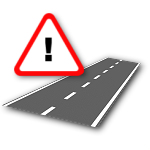 |
This means your building is not connected to a road or path.
You can also get this warning if a building needs to be placed on a road (but isnt).
|
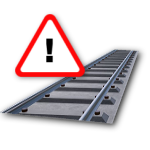 |
This means your building is not connect to railway or monorail. Monorail stations need to be placed on existing monorail lines. Train stations need to be next to railway tracks.
|
 |
This means your building does not have enough power. You will need to add some new power stations (or upgrade your existing ones). These are in the utilities category.
|
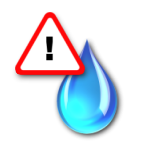 |
This means your building does not have enough water. You will need to add some new water plants (or upgrade your existing ones). These are in the utilities category.
|
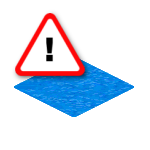 |
This means your building needs to be next to water (but isn't) or needs to be placed on water (but isnt).
|
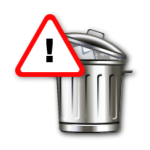 |
This means your building does not have enough trash removal. You will need to add some new recycling/waste buildings (or upgrade your existing ones). These are in the utilities category.
|
Some helpful tips...
- Balancing employment is one of the most important aspects of running your city. For each 15 residents, try and provide 10 commercial and 5 industrial jobs for them.
- Ecology is very important to city happiness. Trees and parks soak up pollution and also boost your happiness.
- Place parks in residential areas to get a boost to your residential happiness and an increase in total population.
- Keep pollution away from residential and commercial areas.
- Build transportation networks to lower pollution levels and increase city happiness.
- Try and save your gold to purchase high level buildings that boost your income.
- The happier your city is the more income you will earn from it.
- Log in every day to collect your daily bonus... the longer you play the bigger the bonuses you'll get.
- Ensure you have good city services coverage to all areas of your city. This will raise your city happiness. Try upgrading them for larger coverage rather than just building more.
- Upgraded buildings will provide more housing, more happiness or greater income.
- Watch videos for free gold.
- Gold and diamond buildings have free upgrades.
- If the game runs slowly on your device, switching it into low detail (or off completely) should help.
Further help can be found in our FAQ.
Happy designing!















